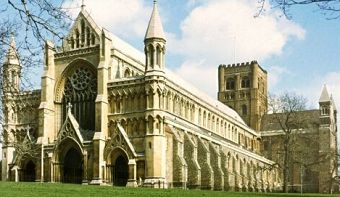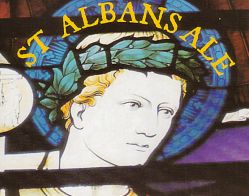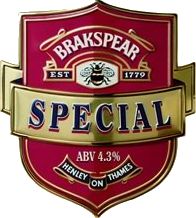 |

|
|

|
|
|
 |

home
about
features
A-Z
books

|

|

Protz:
features
reviews
tastings
|

| |
beer, by holy orders
by Willard Clarke, 11/05
A special St Albans Ale has gone on sale in the Cathedral and Abbey Church of St Albans, restoring a potent link with the time when brewing was controlled by the church and carried out by monks. The tradition ended
with the dissolution of religious houses by Henry VIII, when not only abbeys and monasteries were wrecked but even the most humble monks' hospice was destroyed.
|
|

|
Until the Reformation, the church dominated brewing. St Albans Abbey was such a key religious establishment - its diocese stretched as far as Wymondham in Norfolk - that large amounts of ale would have been made and consumed. An indication of the scale of monastic brewing can be seen at Fountains Abbey in Yorkshire where the brewhouse produced 60 barrels of strong ale every 10 days, while the Domesday Book records that the monks of St Paul's in London brewed 67,814 gallons of ale a year, equivalent to 1,884 barrels.

|
|
The beer brewed by the B&T; Brewery in Shefford, Bedfordshire - part of the St Albans diocese - differs in many ways with the ales of medieval times. The most important difference is that hops were not used in
brewing in England until the 15th century and monks, conservative by nature and cut off from the commercial world, would have been the last to use hops.
The plant was introduced to Kent by Flemish weavers, who preferred bitter German-style beers to the heavy and sweet English ales.
|
Ale was brown in colour and had a smoky and often burnt character, as barley malt, the essential raw material, was "kilned" or gently roasted over fires fuelled by wood. Wood often flared, charring the malt.
Nevertheless, English ale enjoyed a fine reputation. When Thomas Becket, Henry II's chancellor and future Archbishop of Canterbury, took two chariot loads of ale with him on a diplomatic mission to France in 1158, it was said to be "decocted from choice fat grain as a gift for the French who wondered at such an invention - a drink most wholesome, clear of all dregs, rivalling wine in colour and surpassing it in savour".
Ale was important to abbeys and monasteries in a number of ways. It allowed abbots and bishops to monopolise the supply of alcohol and prevent the development of a commercial brewing industry beyond their control. Ale was vital to the good health of monks, at a time when water and milk were unsanitary, whereas ale made from barley, oats and other grains, boiled with water and fermented with yeast, was full of natural goodness.
Brewing at St Albans would have followed the system used in other abbeys, a system that reflected the growing stratification of society. A strong ale, known as prima melior, was reserved for the abbot and distinguished visitors. The same mash of grain would be used to make a weaker ale called secunda for the monks and lay workers and the grain would then be used a third time to produce a weak tertia for the hordes of pilgrims who came to abbeys in search of bed and sustenance as well as religious comfort. This extremely weak drink, considered suitable for women and children, was dubbed "small beer" by Shakespeare.
Monks were allowed a ration of a gallon of ale a day. The brothers involved in brewing marked the casks of finished ale with crosses, both as a blessing and to indicate strength: the more crosses used, the stronger the beer. It is a habit - pardon the pun - that survives today with such well-known beers as Wadworth 6X.
St Albans Abbey has a further connection to brewing. Nicholas Breakspear, who became Pope Adrian IV in 1154, came from Abbots Langley and has close associations
with St Albans. He was distantly related to the Brakspear family - different spelling but same pronunciation - who established a brewery in Henley-on-Thames in the 18th century.
The relationship was marked by the brewery symbol of a bee, which recalled that Nicholas Breakspear, the only English pope, incorporated a bee in the insignia of his mitre to mark both the first letter of the family name and also that he was born at Bedmond Farm.
|
|

|
The abbey will not follow in the steps of the famous Trappist monks of Belgium who still brew their own ales. But the arrival of the Abbey Ale restores an important historic link.
And, recalling the success that Chancellor Becket had in France with his English ale, perhaps Tony Blair should be advised to take some Abbey Ale with him on his next visit to President Chirac.
|
|
home
about
features
A-Z
books
|

